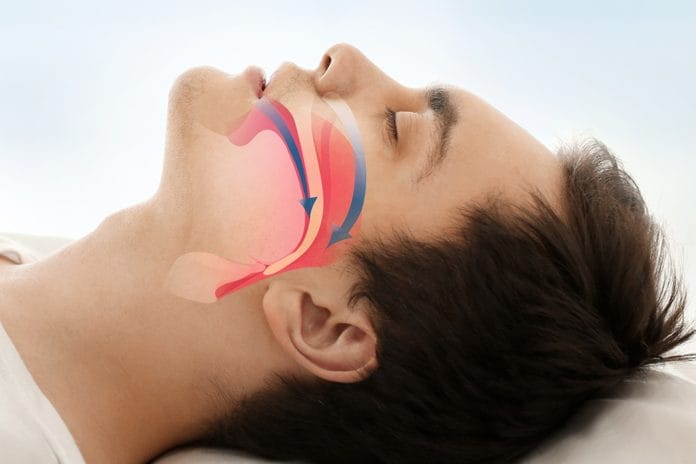As dental clinicians, the medical history and clinical examination of our patients play important roles in differentiating vital signs which may be affecting the patient’s medical and dental health. Recently, the dental community has become more aware of the potential risks to medical health through disrupted sleep patterns caused by anatomical facial variances. Dental clinicians can initiate the diagnosis of possible sleep issues. Most commonly, patients are screened for obstructive sleep apnea (OSA), but another common sleep disorder is upper airway resistance syndrome (UARS).
Upper airway resistance syndrome is “a sleep disorder characterized by the narrowing of the airway that can cause disruption to sleep.1” UARS occurs during sleep, as airflow is reduced from a narrowing, not closing, of the airway which can stimulate and increase inhaling. This upper airway collapse can cause “turbulence as a result of the decreasing airway diameter.”2 Furthermore, the typical UARS patient who is “not obese,” may “possess triangular face and misaligned jaw” or may suffer from a nasal valve collapse or a deviated septum.1
Snoring and/or heavy breathing during sleeping are a common sign of UARS. The disruptions during sleep can result in daytime fatigue and frequent awakenings. As UARS goes untreated, insomnia (difficulty falling or staying asleep), frequent awakenings, depression, and weight gain can increase.2
Understanding and differentiating UARS from OSA is important in properly diagnosing the patient to implement proper treatment options. OSA identifies more with gender and demographics than UARS. OSA typically is higher among men than women, affects those with obesity, and is common among those forty years old or older; whereas UARS is more common in women and not isolated to the female gender and can affect children. Unlike OSA, obesity is not a common factor in UARS patients.
OSA and UARS share some of the same symptoms such as postural hypotension, headaches, gastroesophageal reflux, irritable bowel syndrome, anxiety, and sleep onset. However, UARS shows signs of increased daytime sleepiness, fatigue, and sleep fragmentation. Furthermore, OSA in indicated by pauses and decreases in breathing while sleeping. The disruptions in breathing while sleeping is less evident or non-existence in those affected by UARS.3 To positively identify UARS from OSA the difference in responses of an Electroencephalography (EEG) and the autonomic nervous system response of the breathing patterns must be examined.3
Although there are few studies designed to indicate the best treatment of UARS, there are recommendations that may positively impact the sleep disruptions caused by UARS.1 Modifications in the lifestyle of the UARS patient, such as increasing sleep time, positional therapy, and dietary alterations are recommended. Also, weight loss, if needed, may also be an effective treatment recommendation. Another treatment remedy is administering nasal steroid medication to improve the airflow through the nasal passage if warranted.
Similar to OSA, UARS can be treated with a Continuous Positive Airway Pressure (CPAP) device, but this may have limited effectiveness. However, a dental oral sleep appliance is a more effective treatment option because it manipulates the tongue and jaw to open the constricted airway. Lastly, surgery to increase the dimensions of the upper airway is also an option but is a less common and riskier UARS treatment option.
The screening of OSA and UARS may be more common in the dental practice with adult patients; however, children can be affected as well. Typical markers that can indicate a sleep disorder in a child may mimic the same symptoms of an attention-deficit hyperactivity disorder (ADHD). These symptoms include behavioral problems and a lack of concentration and inattentiveness. Alarmingly, fifty to ninety percent of children that suffer from a sleep disorder develop ADHD like symptoms.4
UARS can affect children due to “minor abnormalities of facial bones” or “enlarged tonsils or adenoids”.1 Therefore, the treatment recommendations to effectively increase airflow in a child are to remove enlarged tonsils or adenoids, apply orthodontic expansion treatment, or prescribe a CPAP.
Sleep deprivation due to a breathing disorder, such as UARS, can have a negative impact on a patient’s health and daily function. Therefore, implementing your knowledge as a dental clinician when reviewing the patient’s medical history and evaluating the intra-oral and extra-oral anatomy for any malformations, may result in effectively improving the patient’s quality of life.
Now Check Out the Self-Study, Peer-Reviewed CE Courses from Today’s RDH!
Listen to the Today’s RDH Dental Hygiene Podcast Below:
References
- Upper airway resistance syndrome. Wikipedia. Retrieved from https://en.wikipedia.org/wiki/Upper_airway_resistance_syndrome
- Upper Airway Resistance Syndrome. American Sleep Association. Retrieved from https://www.sleepassociation.org/sleep-disorders/more-sleep-disorders/upper-airway-resistance-syndrome/
- Luciana B.M., deGodoy, L.D., Palombini, C.G., Puyares, D., Tofik, S., Togiero, S.M. Treatment of upper airway resistance syndrome in adults: Where do we stand?. 2015 January-March 20; 8(1):42-48. Retrieved from https://www.ncbi.nlm.nih.gov/pmc/articles/PMC4608900/
- Woodham, C. Does Your Child Really have ADHD?. June 20, 2012. Retrieved from https://health.usnews.com/health-news/articles/2012/06/20/does-your-child-really-have-adhd












